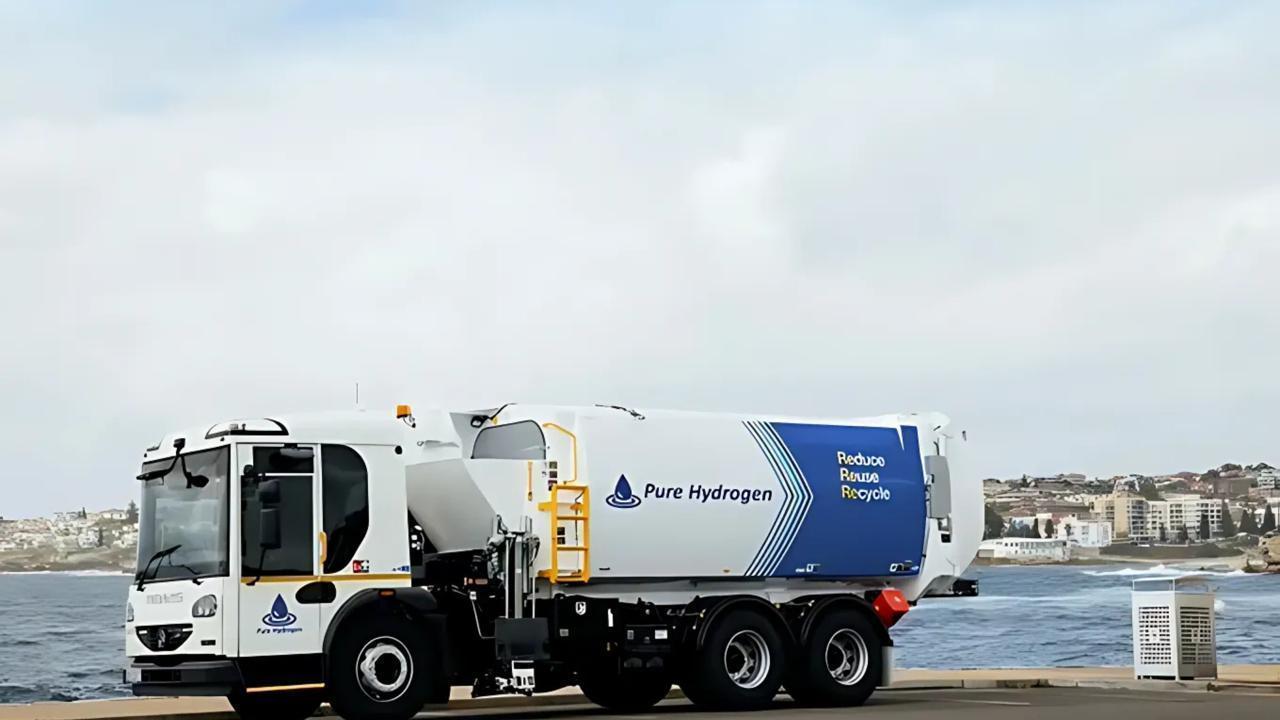
Post by : Amit
Photo : X / Fuel Cells Works
Hydrogen Takes the Wheel in Airport Decarbonization
As the aviation industry continues to wrestle with its carbon footprint, Alaska Airlines has taken a notable leap by piloting hydrogen fuel cell-powered ground support equipment (GSE) at Seattle-Tacoma International Airport (SEA). The pilot program—launched in partnership with the U.S. Department of Energy—is testing hydrogen-powered tugs and baggage tractors, marking one of the first large-scale implementations of this technology in a commercial airport setting in North America.
The early results are promising. Not only have these vehicles demonstrated operational reliability, but they are also delivering up to a 40% reduction in fueling downtime when compared to battery-electric alternatives. For an airport environment where turnaround times are critical, this could represent a breakthrough in sustainable aviation support logistics.
How Fuel Cell GSE Works
Unlike battery-electric GSE, which requires long recharging cycles, hydrogen fuel cell vehicles (FCVs) convert hydrogen gas into electricity on demand, producing only water vapor as a byproduct. This allows for quicker refueling—typically under 10 minutes—and consistent performance throughout the workday.
The test fleet at SEA includes multiple baggage tractors and pushback tugs that operate in high-frequency cycles around the terminal. Each is powered by compact, high-efficiency proton exchange membrane (PEM) fuel cells. Refueling is done via a mobile hydrogen dispenser installed at the airport, eliminating the need for permanent fueling infrastructure during the early trial phase.
Jon Ostrower, Director of Ground Operations Sustainability at Alaska Airlines, noted: “The beauty of hydrogen is that it combines the zero-emission promise of electrification with the uptime and resilience needed in a real-world airport environment. Our crews are already noticing the difference in daily operations.”
A Strategic Pilot Backed by Federal Energy Goals
The initiative is supported by the U.S. Department of Energy’s Hydrogen and Fuel Cell Technologies Office (HFTO), under its broader Hydrogen Shot program aimed at accelerating the commercial viability of clean hydrogen. The project also draws on technical expertise from the National Renewable Energy Laboratory (NREL), which is closely monitoring vehicle performance, energy usage, and emissions metrics.
The pilot aligns with both federal and state-level goals for transportation decarbonization. Washington State’s Clean Energy Transformation Act mandates rapid emissions reductions across all transportation sectors—including aviation—and projects like Alaska’s hydrogen GSE trial are considered key building blocks.
The SEA pilot is also part of a larger roadmap Alaska Airlines has laid out to achieve net-zero emissions by 2040. In addition to exploring sustainable aviation fuels (SAF), the airline is evaluating decarbonization across its entire operational footprint—from aircraft to ground vehicles.
Operational Benefits Already Taking Shape
One of the most significant findings of the trial so far is the drastic cut in downtime related to fueling. Unlike electric GSE, which often require up to four hours to fully recharge and experience power degradation during long shifts, the hydrogen-powered equipment can be fueled and ready in minutes.
Airport staff report seamless integration of the hydrogen vehicles into daily routines. The fuel cell GSE handles the same workload, shift length, and environmental conditions as their diesel or electric counterparts—without the noise, exhaust, or prolonged downtime. The lower weight of hydrogen systems compared to batteries also improves vehicle agility on tight airport aprons.
“Our crews were skeptical at first,” admitted an SEA ground handler involved in the test. “But once they realized these tugs could go a full shift, refuel quickly, and stay consistent, they were sold.”
Scalability and Infrastructure
Despite its promise, hydrogen still faces barriers to widespread GSE adoption. The infrastructure for hydrogen fueling is nascent, expensive, and logistically complex. Mobile refueling units, like the one used at SEA, are only a short-term solution. Long-term adoption would require permanent hydrogen stations at major airports—an investment that depends heavily on demand and policy incentives.
Moreover, the hydrogen used in the pilot is not yet entirely “green”—meaning it’s not 100% produced from renewable sources. However, Alaska Airlines has confirmed that future scaling will prioritize green hydrogen sources to ensure emissions benefits remain robust across the entire energy cycle.
The cost of hydrogen fuel cells also remains higher than electric or diesel options, though manufacturers believe prices will fall rapidly with increased production and innovation.
A Broader Blueprint for Green Aviation Ground Operations
What makes Alaska Airlines' pilot truly significant is its potential replicability. Airports around the world are seeking immediate and practical ways to cut carbon without disrupting operational continuity. Fuel cell GSE could be a fast-track option for airports struggling with the limitations of battery electrification—especially those in colder climates or with high-turnover flight schedules.
According to NREL’s projections, a fully hydrogen-powered ground fleet could reduce an airport’s direct ground emissions by up to 95%, assuming a renewable hydrogen supply. This figure, combined with the uptime advantage, presents an appealing business case for airports and airlines alike.
Alaska Airlines is already in talks with Los Angeles International Airport (LAX) and Portland International Airport (PDX) to explore expansion of the hydrogen GSE model if the SEA trial continues to yield strong results.
Federal Support Growing for Hydrogen in Aviation
Momentum is also building at the policy level. The U.S. Inflation Reduction Act includes incentives for clean hydrogen production, while the Department of Transportation and Department of Energy have initiated multiple grant programs to support airport-based hydrogen projects.
In parallel, a number of aircraft manufacturers are also experimenting with hydrogen-powered aviation propulsion, creating a potential future where both the skies and the ground operations run on clean hydrogen.
If the infrastructure is built in a modular, scalable way, fuel cell GSE could serve as a bridge to wider hydrogen adoption across the entire aviation ecosystem—from auxiliary power units to short-haul aircraft propulsion.
A Quiet but Powerful Shift on the Tarmac
Alaska Airlines’ hydrogen ground support trial may seem like a quiet development compared to flashy net-zero aircraft announcements—but its implications run deep. By cutting downtime, emissions, and noise while maintaining operational reliability, hydrogen GSE could offer airports an invaluable tool in their decarbonization toolkit.
With policy momentum growing and results proving positive, the trial at Seattle-Tacoma could well become the model for other major hubs looking to transition away from fossil-fueled ground operations. As the race toward zero-emission aviation accelerates, the battle may very well be won first—not in the skies, but on the tarmac.
Alaska Airlines, Hydrogen, Airport Equipment










GST Overhaul Triggers Massive Road Freight Surge in India
India braces for a huge spike in road freight as the GST overhaul and festive season drive consumpti

United CEO Warns Spirit Airlines May Not Survive Financial Struggles
United Airlines CEO predicts Spirit Airlines could go out of business due to repeated bankruptcies a

Allcargo Opens Panapakkam Logistics Park Near Chennai
Allcargo Supply Chain Launches Panapakkam Logistics Park to Boost Southern India Distribution with M

HAL Receives Third GE-404 Engine for LCA Mk1A Fighter Jet
HAL has received the third GE-404 engine from the U.S. for the LCA Mk1A fighter jet program, with an

GlobalLogic Ericsson Launch Private 5G at Hitachi Rail Plant
GlobalLogic and Ericsson have deployed a private 5G network at Hitachi Rail’s Hagerstown facility, e

Honda Cuts Bike & Scooter Prices by Up to ₹18,887
Honda lowers prices of bikes and scooters under 350cc by up to ₹18,887, making commuting more afford